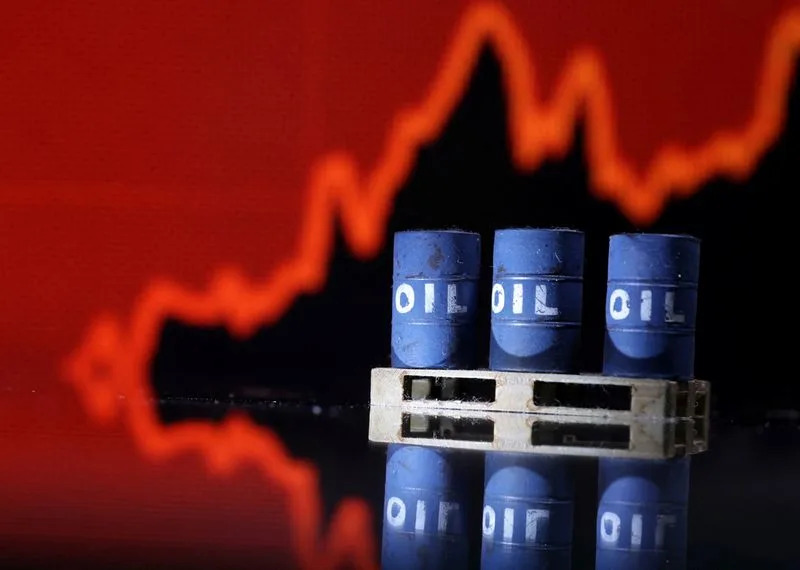# Oil Prices Rise On Cold Weather Impacting Global Markets
HOUSTON (Reuters) - Oil prices have increased by more than 1% on Thursday, driven by colder weather in parts of the U.S. and Europe, which is boosting demand for winter fuels. The surge in prices reflects a shift in market dynamics as refiners ramp up operations to meet heightened fuel consumption needs during the colder months.
## Oil Price Increases
By mid-afternoon trading in Houston, Texas, Brent crude futures stood at $77.14 per barrel, up 98 cents or 1.29%. Meanwhile, West Texas Intermediate (WTI) crude futures were priced at $74.16 per barrel, gaining 84 cents, or 1.15%. These increases followed a decline in both benchmarks by more than 1% on Wednesday.
## Expert Opinions On The Rise In Prices
"The rise is definitely due to winter fuel demand kicking in here in the U.S.," stated John Kilduff, a partner at Again Capital in New York. This opinion aligns with market observations of colder weather across eastern regions and northwestern states, including areas as far north as Kentucky, which are under winter storm warnings.
According to TACenergy's trading desk, the current situation suggests that ice will remain north of the U.S. Gulf Coast refinery row but will not affect fuel output due to heavy rain and wind conditions accompanying the weather system. Refiners have maintained strong operation levels, evidenced by the EIA data showing a rise in refinery crude oil net inputs.
## Refinery Activity And Market Data
The Energy Information Administration (EIA) reported that refinery crude oil net imports rose by 45,000 barrels per day (bpd) during the week ending January 3, reaching levels not seen since December 2018. Additionally, utilization rates at refineries increased by 0.6 percentage points to 93.3%. This indicates a significant push toward producing heating fuels due to colder weather and potential winter demand spikes.
The premium on the front-month Brent contract over the six-month contract reached its highest level since August on Wednesday. A widening backwardation in futures markets, where prompt delivery contracts outperform longer-dated ones, typically signals either declining supply or rising demand. In this case, the rise is attributed to increased heating fuel consumption as temperatures drop.
## Global Demand And Market Structure
The EIA also highlighted that U.S. demand for crude oil has been growing steadily, partly due to colder weather in Europe and Asia. Meanwhile, global oil demand is projected to remain strong throughout January, further driven by colder-than-normal winter conditions. These factors are expected to bolster heating fuel consumption while accelerating travel activities in China ahead of the Lunar New Year holidays.
## U.S. Energy Policies And Market Sentiment
U.S. President Joe Biden is set to announce new sanctions targeting Russia's economy this week. The administration aims to strengthen Ukraine's military efforts as former President Trump prepares for his Jan. 20 transition. Key targets include Russia's oil industry, adding pressure on global crude markets.
The dollar has seen a notable strengthening on Thursday. Looking ahead, OANDA senior market analyst Kelvin Wong forecasts that WTI crude will oscillate between $67.55 and $77.95 in February as markets await clarity on U.S. policies and China's fiscal stimulus plans. This outlook underscores the continued complexity of global energy markets amid shifting geopolitical dynamics.
## Conclusion
Oil prices remain volatile, influenced by a combination of colder weather, increased demand for heating fuels, and geopolitical developments. Traders and market analysts will continue to closely monitor these factors as they shape the remainder of 2024.
---
This report reflects current market conditions and expert opinions as of January 4, 2024.



